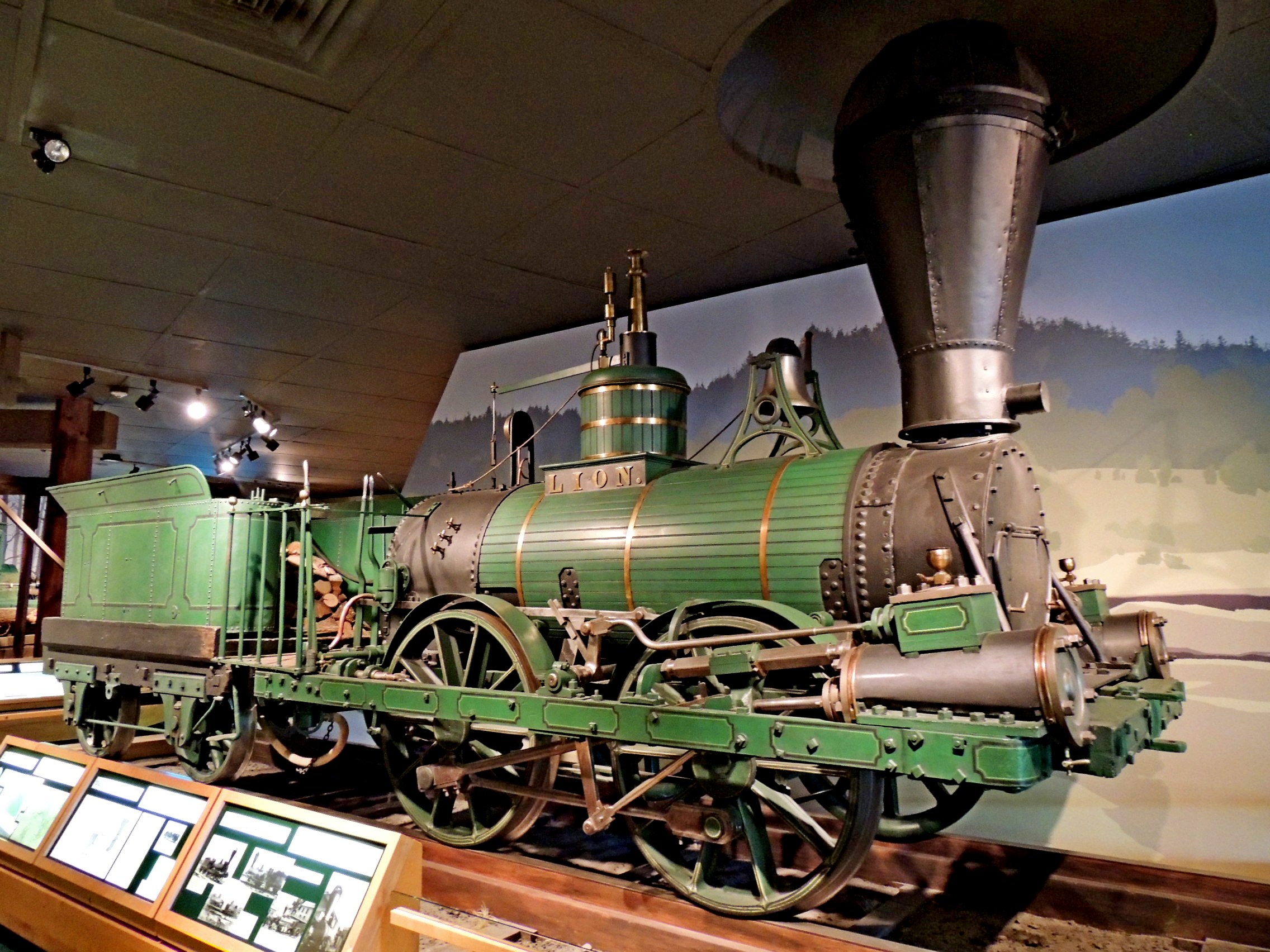|
 OLDEST - American-built Locomotive in New England Posted by:  T0SHEA T0SHEA
N 44° 18.360 W 069° 46.969
19T E 437561 N 4906158
The Lion is an 1846 locomotive, the oldest remaining American-built locomotive in New England.
Waymark Code: WMQ7Z9
Location: Maine, United States
Date Posted: 01/06/2016
Views: 2
The oldest in New England and the eighth oldest in the nation, The Lion, an 0-4-0 steam locomotive, was manufactured by Hinkley & Drury (Hinkley Locomotive Works) in 1846 for the Whitneyville and Machiasport Railroad in eastern Maine. Rated at 100 horsepower, it operated as a locomotive on the line until 1890, at which time it was sold to Thoman Towle of Portland. It was later purchased by the City of Portland and appeared in the 1898 Fourth of July parade. In 1905 The Lion was bequeathed to the University of Maine at Machias and remained on display at the University until 1985, at which time it became the property of the Maine State Museum in Augusta. There, it has been put on display, complete with coal and water tender, in a prominent location just inside the entrance.
The locomotive was built by Hinkley & Drury (Hinkley Locomotive Works) in 1846 as the Lion for the Machiasport Railroad of eastern Maine. The Lion operated as a working locomotive until 1890. It was sold in 1897 to Thoman Towle of Portland, Maine. It was then purchased by the City of Portland and appeared in the 1898 Fourth of July parade. The Lion was give to the University of Maine in 1905 and was displayed and owned by the University until 1985 when it was given to the Maine State Museum.[2] It was added to the National Register of Historic Places in 1976. The Lion is the oldest American-built locomotive in New England.
From Open Access Articles
The Lion
The LION was #62 of the engines built by the Boston firm of Hinkley and Drury. It was designed as a small, lightweight freight engine. Shipped to Maine in 1846, the engine weighed only 9 tons and was commonly run at speeds of up to 10 m.p.h.
The tender carried both the water used in the boiler and the firewood used to turn it into steam. Each round trip from Whitneyville to Machiasport (about 16 miles) is thought to have required the use of around 600 gallons of water and 1/2 cord of wood. 
The Lion
From a historic point of view the value of the locomotive Lion cannot
be overestimated, especially when one considers its age. It is also
interesting from an engineering point of view when it becomes evident that within a period of 136 years the basic mechanical changes which have taken place in the mechanism of steam locomotive are very few and consist mostly of refinements.
The locomotive Lion was built in Boston in 1840 by the firm of
Hinkley and Drury which later merged into the firm of Hinkley and Williams who continued to build locomotives for many years. A similar locomotive, named the Tiger, was also built the same year, which was practically a duplicate of the Lion. These two locomotives which developed 100 horsepower were built expressly for the Whitneyville and Machiasport Railroad Company and they did actual duty for a period of fifty years.
The Whitneyville and Machiasport Railroad was the second steam
railroad in Maine (the first being the Old Town Railroad Company, chartered in 1832), and was operated by the Boston Eastern Mill and Land Company, organized in 1833, for the purpose of doing a general lumber business at Middle Falls, now Whitneyville. The road was started in 1840 and completed in 1842 for the sole purpose of transporting the lumber from Middle Falls to Machiasport or to the tide water. The track was 4 feet 8-½ inches gauge and consisted of flat bars of iron laid on top of 2x3 inch wooden stringers, which rested on 8 x 8 inch timbers supported by 8 x 8 inch ties. The first
engine used was the Phoenix, built in England and leased from the Eastern Railroad of Boston. In the meantime, the two locomotives, the Lion and the Tiger, were being built for the Boston and Eastern Mill and Land Company.
The actual date of their operation is not known to the writer, but it is known that they were contracted for in 1840. After 1866 the
Whitneyville Agency succeeded the Boston and Eastern Mill and Land Company which in turn was dissolved in 1896, and the Sullivan family of Whitneyville then became the sole owners. Through the efforts of the Sullivans and Alderman Rounds of Portland, the Lion now belongs to the University of Maine, at Machias where it rests to give future generations a true conception of an early steam locomotive.
From the NRHP Nomination Form
Type of documentation of superlative status: Open Access Articles and Wiki

Location of coordinates: At the site

Web Site: [Web Link]

|
Visit Instructions:
Post one photo of the waymark that is a different view from the one on the page and describe your visit, including the date. Other information that you may regarding the waymark is encouraged. Neither you nor your GPSr need to appear in any photos!
Recent Visits/Logs:
| There are no logs for this waymark yet. |
|
|
|
|